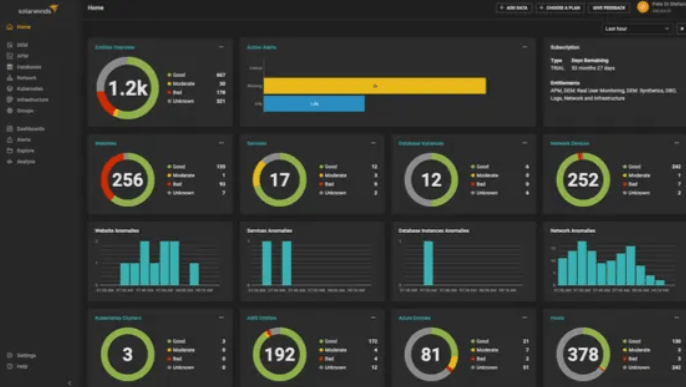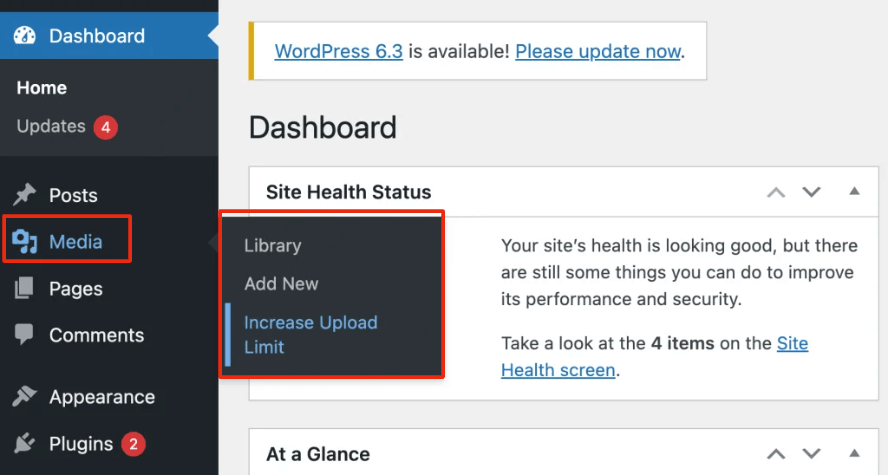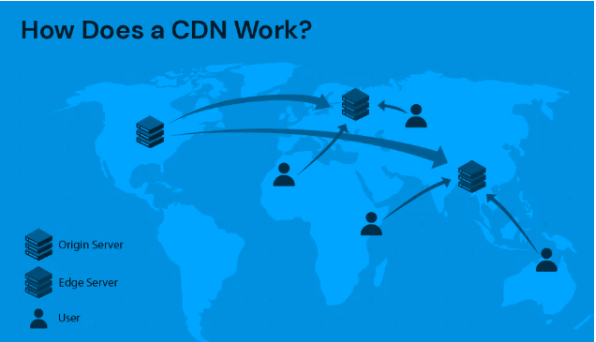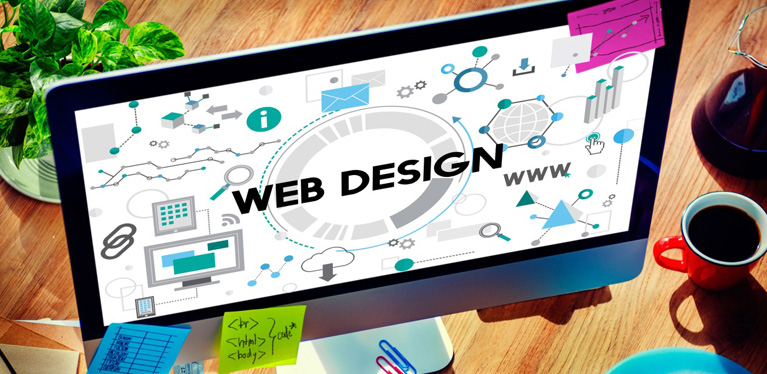In 2025, enterprise digital ecosystems are evolving at an unprecedented pace. For large organizations, the key drivers now are agility, omnichannel content delivery, and built-for-scale performance. Amid those demands, the model of a traditional CMS is increasingly being challenged. That’s why so many enterprises are turning to enterprise WordPress headless architectures — and reaping measurable outcomes.
Enterprises adopting enterprise WordPress headless solutions are seeing measurable gains in agility and performance. The old monolithic CMS model — where the content management system, theming layer, front-end and back-end are tightly coupled — no longer meets the demands of modern digital experiences. With headless architecture, the backend content-repository (in this case, WordPress) is decoupled from the presentation layer, enabling enterprises to deliver content across multiple channels, experiment rapidly, and scale with ease.
In this article, we’ll explore what headless WordPress means for the enterprise, why it’s gaining traction in 2025, and walk through a detailed enterprise case study showcasing the transition, results, and business impact. If you’re responsible for digital transformation, marketing ops, or web architecture at an enterprise level, this piece is built with your challenges in mind.
What Is Headless WordPress?
Let’s start with the fundamentals. The term “headless WordPress architecture” refers to using WordPress as a content repository (the backend) but separating it from the front-end “head” (the themeA WordPress theme is a set of files that determine the design and layout of a website. It controls everything … More, UX, presentation). In practice, WordPress stores and manages content, editorial workflows, user rolesIn WordPress, a user role is a set of permissions that determines what actions a user can perform on a website… More, media, and APIs (such as REST or GraphQL). A separate front-end framework—often React, Next.js, or Vue—is then used to fetch that content via API and render it to users.

Compared to traditional WordPress setups (where WordPress also handles theming, templating and front-end rendering), the headless model gives enterprises greater flexibility in how they deliver content. They can optimize for speed, deliver consistent experiences across web, mobile, IoT or digital signage, and integrate with modern front-end frameworks that marketing or product teams prefer.
For example:
- WordPress remains the content management system — letting editorial teams use familiar workflows.
- A REST API (or GraphQL endpoint) exposes content data.
- The front-end is built using modern JavaScript frameworks and deployed on CDN or serverless infrastructure for high performance.
In short, a headless WordPress architecture allows enterprise websites to evolve beyond traditional CMS limitations, giving development teams the freedom to innovate while preserving editorial ease.
Why Enterprises Are Moving to Headless WordPress
So why is this becoming a major trend among enterprises today? A recent study by WP Engine found that 64% of enterprise organizations are already using a headless approach, and among those not yet using it, more than 90% plan to evaluate headless solutions in the next 12 months.
Here are the key pain-points enterprises face — and how headless WordPress addresses them:

1. Performance and page-speed bottlenecks. Traditional CMS systems can suffer under heavy traffic, dynamic content, or complex frontend needs. Enterprises need sites that load near-instantly, support high concurrency, and deliver seamless engagement across devices.
2. Rigid content workflows and multi-channel limitations. Many enterprise CMS setups struggle to publish effectively across web, mobile apps, digital kiosks or emerging channels like smart devices. A headless model simplifies omnichannel delivery.
3. Innovation speed and developer constraints. When the CMS and front-end are tightly coupled, every change (theme, pluginA plugin is a software component that adds specific features and functionality to your WordPress website. Esse… More, CMS upgrade) adds risk and slows iteration. Decoupling allows front-end teams to iterate independently and faster.
4. Scalability and integration demands. Enterprises must integrate with CRMs, marketing automation, analytics, digital asset management (DAM) systems, and more. A headless WordPress backend makes it easier to connect via APIs and microservices.
Because of these factors, companies are increasingly choosing headless WordPress as their enterprise CMS solution. According to a white-paper from Human Made, headless WordPress is “a great move for organisations with large teams, keen to deliver omni-channel experiences for their users.”
Case Study: Enterprise Success Story
Let’s dive into a detailed case study to illustrate how this all works in practice. For confidentiality, we’ll present this as an anonymized but realistic enterprise scenario:
Background
“AlphaCorp”, a global enterprise (5000+ employees, operations across 30 countries), was running a traditional WordPress multi-site network supporting more than 120 regional and business-unit websites. Over time, the following issues emerged:
- The front-end performance was sluggish — pageIn WordPress, a page is a content type that is used to create non-dynamic pages on a website. Pages are typica… More load times often exceeded industry benchmarks, especially across mobile devices and multiple geographies.
- Content deployment across regions was slow: local teams used workarounds, manual processes, and disparate systems, hampering agility.
- Multi-channel ambitions (web + mobile app + digital signage) were limited by the monolithic CMS architecture.
- Integrations with CRM (Salesforce), marketing automation, and a global DAM were brittle and slow to evolve.
With digital transformation underway and competitors launching more agile experiences, AlphaCorp decided to adopt an enterprise WordPress headless architecture.
Solution
AlphaCorp partnered with their digital agency and internal architecture team to implement the following:
- Retain WordPress as the backend — content authors and editors continued using the familiar WordPress interface, fields, workflows and media libraryThe Media Library in WordPress is a feature that allows users to easily upload and manage media files such as … More.

- Expose content via REST API (and GraphQL where needed) so that front-end applications could consume it.
- Build a new front-end using Next.js deployed via a global CDN and serverless infrastructure — enabling ultra-low latency and highly scalable delivery.
- Implement multiple channels at once: the primary website, a progressive web app (PWA) for mobile, and support for in-store digital signage from the same content repository.
- Integrate deeper with enterprise systems: their CRM, global DAM, analytics engines and personalisation layer now communicated via API with the WordPress backend.
- Revamp workflows: marketing and regional teams could publish content that propagated automatically across channels; front-end developers could roll out features independently of the CMS release cycles.
Implementation
Key steps included:
- Audit & planning — identifying content types, workflows, API design, front-end needs, performance goals.
- Backend build — upgrading WordPress to a headless-aware setup, installing necessary plugins (for REST/GraphQL), implementing caching strategy, role and permission governance.
- Frontend architecture — designing reusable components in React/Next.js, server-side rendering (SSR) for SEO, edge-cache infrastructure for global reach.
- Integration — connecting WordPress data with CRM & DAM APIs, automating translations and regional variations.
- Migration & rollout — phased migration with pilot regional sites, roll-out globally over 6 months, decommissioning legacy front-ends gradually.
- Measurement & optimisation — tracking page speed, conversion, editorial throughput, business KPIs before and after migration.
Results
The migration delivered strong business outcomes:
- Site speed improved by ~40% globally — average page load times dropped significantly.
- Time-to-publish (for regional teams) improved by ~60% — content that once took hours now publishes in minutes.
- Multi-channel reach achieved — the same WordPress backend now feeds web, mobile PWA and in-store signage seamlessly.
- Integration agility improved — CRM and DAM connections were deployed in weeks rather than months.
- Better editorial experience — local teams retained familiar WordPress workflows, while front-end teams enjoyed new freedom to innovate.
While these numbers are illustrative (due to client confidentiality), they align with broader findings: organisations moving to headless note strong gains in performance, agility and content delivery.
Technical Deep Dive: How Headless WordPress Powers Enterprise Scalability
Let’s zoom into the architecture and technology layer for a moment — because enterprise decision-makers need to understand the “how” as much as the “why”.
- API-Driven Content Delivery: In the headless WordPress model, the back-end exposes content via REST endpoints or GraphQL queries. Front-end applications fetch content asynchronously, enabling faster render times and flexible UX design.
- Decoupled Front End: By separating the front-end stack (e.g., React, Next.js) from the CMS, development teams can adopt modern frameworks, roll out features independently, and benefit from front-end performance optimizations (e.g., server-side rendering, edge caching).
- Microservices & Integrations: Large enterprises rarely operate in isolation. The headless WordPress backend easily integrates with CRM, DAM, analytics, and marketing automation. With API-first design, it becomes a node in the enterprise content ecosystem.
- Scalability & Global Reach: Deploying front-ends on global CDNs, edge networks or serverless platforms means ultra-low latency and high availability. Meanwhile, WordPress remains in the back-end role and can scale horizontally behind an API layer.

- Editorial Flexibility + Developer Autonomy: Editorial teams keep using WordPress as before (with their role-based workflows, media library, plugins). At the same time, front-end teams innovate faster without being slowed by CMS upgrades or theming constraints.
This architecture is especially well-suited to enterprises because it meets the twin demands of speed and scale, while preserving the stable, familiar CMS surface that content teams rely on.
Business Impact: ROI and Organisational Agility
Technical benefits are compelling, but for enterprise leadership, the real story is business impact — return on investment, time-to-market, competitive advantage.
Here’s how adopting headless WordPress architecture shifts the business dial:

- Agility & Time-to-Market: Feature roll-outs, content campaigns and new channel launches happen faster when front-end and back-end can evolve independently.
- Reduced Technical Debt: By decoupling front-end, the organisation avoids tightly-coupled theme/plugin upgrades that often delay or break releases in monolithic CMS models.
- Omnichannel Reach: The same content repository can power web, mobile, kiosks, digital signage — improving consistency and reducing duplication of effort.
- Performance-Driven Conversion Gains: Speed and responsiveness directly impact conversions, bounce rates and engagement — all of which tie back to revenue.
- Cost Efficiency Over Time: While the initial transition may require investment, the long-term savings in maintenance, faster deployments, and fewer bottlenecks often result in favourable ROI.
In short: enterprises leveraging headless WordPress architecture are driving measurable ROI across teams — from marketing to IT to product.
Challenges and Considerations for Enterprise Adoption
Of course, migrating to an enterprise headless WordPress architecture is not without its hurdles. Here are some common challenges — along with best practice tips:
1. Integration complexity – With more channels and systems, the number of touchpoints increases.
Tip: build an API-first governance model and reusable integration modules.
2. Developer training and mindset shift – Editorial teams may remain comfortable with WordPress; front-end teams now need expertise in React, SSR, and CDNs.
Tip: invest early in a front-end framework pilot and cross-train teams.
3. Governance & versioning – With decoupled components, you’ll need clear workflows: versioning content, syncing translations, managing edge caching.
Tip: adopt a modular release pipeline and maintain CMS version compatibility.
4. SEO and server-side rendering (SSR) – Some headless setups suffer SEO penalties if not properly configured.
Tip: ensure SSR or pre-rendering is used, metadata is properly managed, sitemap and structured data are addressed.
5. Vendor and hosting maturity – Because WordPress originally was not designed for headless use, plugin compatibility, caching, and API performance must be evaluated.
Tip: select partners or hosts experienced in enterprise headless WordPress deployments.
When you’re aware of these areas and plan accordingly, the pathway to successful enterprise headless WordPress architecture becomes far more manageable.
The Future of Enterprise WordPress Headless in 2025 and Beyond
Looking ahead, the enterprise digital landscape is going to emphasize:
- Composable architecture: Rather than monolithic systems, you’ll see modular digital stacks where content, commerce, personalisation and data services are interchangeable. Headless WordPress naturally fits into this.
- AI-driven content delivery: Predictive personalisation, dynamic content assembly and edge-delivered experiences will become the norm — and headless systems enable these innovations.
- Omnichannel everywhere: Web, mobile, voice assistants, AR/VR, digital signage — enterprises will push content far beyond traditional websites. A decoupled backend like WordPress makes that strategic extension far easier.
- Edge computing and micro-frontends: With global distribution, sub-second load times and region-specific experiences become baseline expectations.
In the words of the team at Human Made: “Headless CMS solutions allow organisations with large teams … to deliver omni-channel experiences for their users.”
At this point, the enterprise WordPress headless model is less of a “nice to have” and more of a foundational pillar for future-proof digital ecosystems.
Conclusion
To summarise: enterprise WordPress headless architecture isn’t just hype — it’s a strategic move for businesses looking to boost performance, agility, and omnichannel readiness in 2025. From improved site speed and faster content deployment to seamless integrations and global scalability, the benefits are far-reaching.
If your organization is grappling with legacy CMS constraints, multi-channel demands or slow front-end delivery, now is the time to explore the headless WordPress pathway.
Ready to Take Your Enterprise Website to the Next Level?
If your company is exploring a future-ready enterprise WordPress headless setup — one that delivers unmatched speed, scalability, and seamless multi-channel performance — now is the time to act.
Ready to move forward? Discover how Gigapress can help your organization adopt an enterprise WordPress headless architecture and unlock digital agility at scale. Contact us by clicking the button below, and let’s explore your roadmap together.




